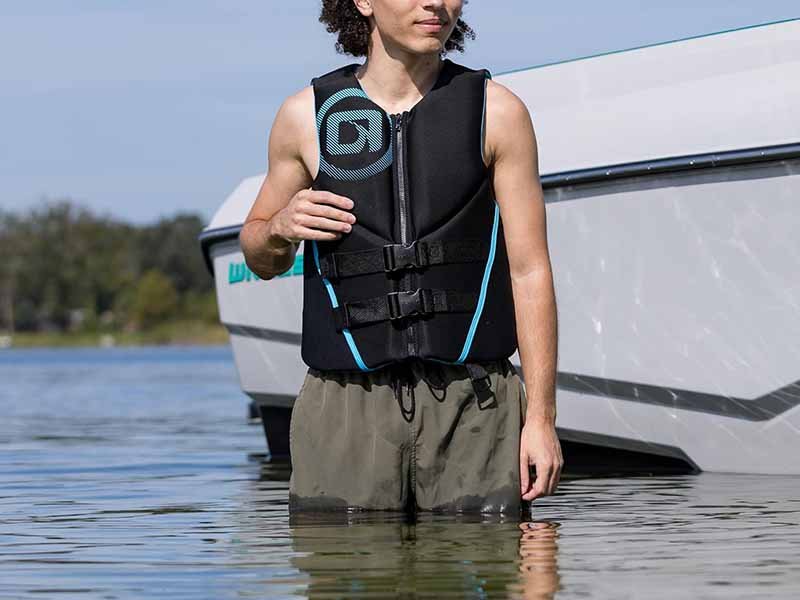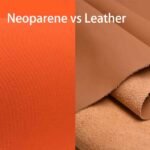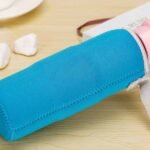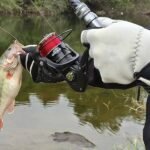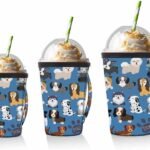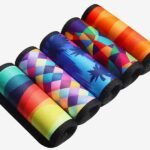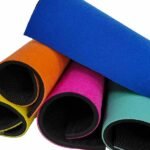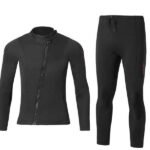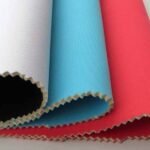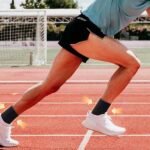Neoprene life jackets combine advanced materials engineering with ergonomic design to offer buoyancy, comfort, and durability in water-safety gear. Unlike bulky foam vests, neoprene jackets fit like a second skin—providing superior freedom of movement for activities ranging from yacht charters to professional rescue operations. Their inherent stretch, thermal insulation, and abrasion resistance make them an ideal choice for both recreational and industrial marine applications.
A neoprene life jacket is a personal flotation device made from synthetic rubber (neoprene) and closed-cell foam, offering streamlined buoyancy, thermal insulation, and an ergonomic fit. These jackets combine neoprene’s flexibility with certified buoyant foam inserts to meet international safety standards, ensuring both comfort and protection in marine, rescue, and watersport contexts.
Whether you’re outfitting a fleet of fishing vessels or equipping a dive center, understanding neoprene life jackets’ unique advantages is key. Imagine the moment when a chartered yacht encounters choppy seas—your crew’s lives may hinge on gear that stays snug under high stress. In the next sections, we’ll unpack material science, safety certifications, customization options, performance benefits, maintenance best practices, and cost analyses—so you can make informed purchasing decisions. Let’s dive in!
What Materials and Construction Methods Are Used in Neoprene Life Jackets?
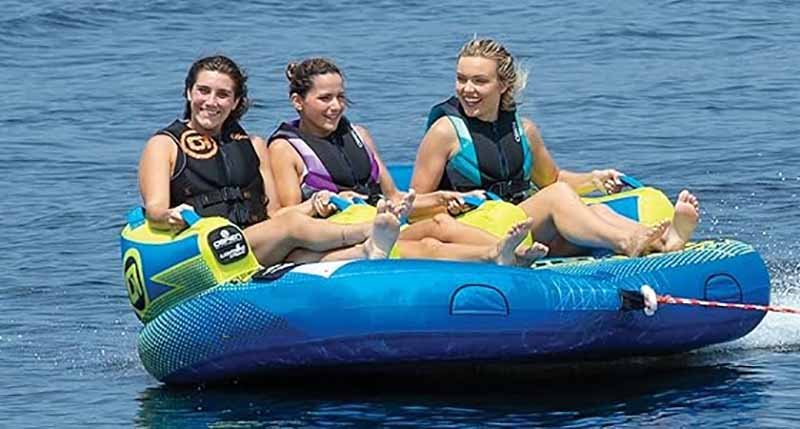
Neoprene life jackets typically use 3–5 mm closed-cell foam laminated between outer and inner neoprene panels. High-grade limestone-based neoprene offers UV and chemical resistance. Seams are either RF-welded for a smooth, leak-free finish or stitched with reinforced nylon thread and sealed tape. Linings often feature quick-dry mesh or tricot for comfort. These construction choices ensure durability, flexibility, and consistent buoyancy, meeting rigorous safety and performance requirements in marine applications.
Neoprene Grades & Foam Cores
High-quality neoprene for life jackets is often limestone-based, yielding a lower environmental impact and robust UV/ozone resistance. Manufacturers rate neoprene by tensile strength and compression set—critical metrics for maintaining shape under repeated flexing. Closed-cell foam cores, typically with densities of 40–60 kg/m³, provide the buoyant force mandated by USCG (minimum 16 lb for Type III PFDs) or CE (50 N buoyancy) standards. Denser foam increases buoyancy but reduces flexibility, whereas lighter foam maximizes comfort but may require thicker panels.
Laminations & Panel Assemblies
Under heat and pressure, manufacturers laminate foam between outer and inner neoprene skins, ensuring full adhesion without cold spots that can delaminate over time. Outer skins use high-tenacity nylon tricot or nylon/spandex blends for abrasion resistance and quick drying. Inner skins often employ polyester tricot mesh to promote airflow and reduce chafing during extended wear.
Seam Technologies
- RF Welding: Radio-frequency welding fuses neoprene edges without stitching holes, preventing water ingress and seam failure.
- Stitch & Tape: Reinforced nylon thread stitches critical areas (belt loops, panel joins), then a waterproof tape covers the seam for added strength and leak prevention.
Hardware & Accessories
Buckles, D-rings, and webbing straps are marine-grade polymer or stainless steel to resist corrosion. Webbing is typically 1–1.5 in nylon or polyester rated for >1,000 lb tensile strength. D-rings provide attachment points for tools or safety lines, and integrated whistle loops ensure signaling devices remain accessible.
Quality Control & Testing
Finished jackets undergo buoyancy tank tests, UV exposure, and flex-cycle testing. Panels must meet ISO 12402-5 (<15% compression after 48 h at 23 °C) and USCG buoyancy retention requirements after 24 h water immersion. These rigorous checks guarantee consistent performance in commercial marine operations.
By mastering these material and construction methods, buyers can specify neoprene life jackets tailored to their operational demands—whether for thermal protection in cold waters or maximized flexibility for agile rescue tasks.
How Do Neoprene Life Jackets Compare to Traditional PFDs?
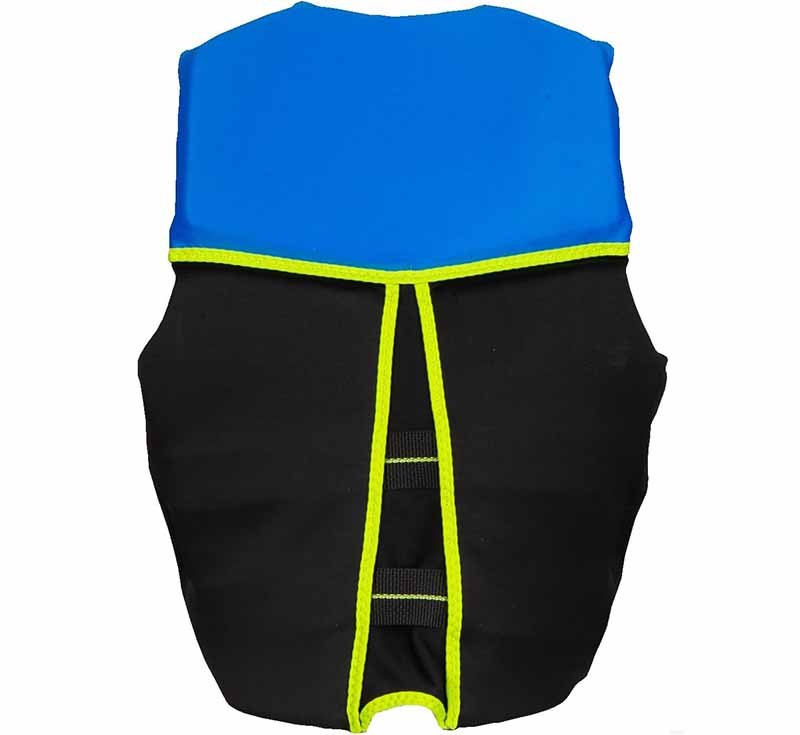
Neoprene life jackets offer a snug, form-fitting design and superior thermal insulation compared to traditional nylon/foam PFDs. They provide better freedom of movement, reduced chafing, and enhanced buoyancy retention over time. Traditional PFDs may be lighter and less expensive, but neoprene jackets excel in comfort, durability, and professional contexts—making them the preferred choice for dive operators, rescue teams, and watersport rentals.
Buoyancy & Fit
Traditional Type III PFDs use loose foam panels in a nylon shell, often requiring bulkier silhouettes. Neoprene jackets laminate foam directly against the torso, allowing thinner profiles and more even buoyancy distribution, reducing lift at the neck and minimizing discomfort.
Thermal Protection
Neoprene’s closed-cell rubber structure traps a thin water layer that body heat warms, providing insulation in cold conditions. Foam PFDs lack this feature, making neoprene jackets preferable for dive charters, winter kayaking, and cold-climate rescue operations.
Durability & Maintenance
Foam PFDs can suffer foam compression over time, reducing buoyancy and causing deformation. Neoprene’s elasticity and compression-set resistance ensure panels rebound to original thickness, preserving flotation performance longer. Neoprene also better resists oil, saltwater, and UV degradation than standard nylon shells.
Mobility & Ergonomics
Neoprene’s stretch allows full range of motion at shoulders and waist—vital for crews who lean over rails, climb ladders, or conduct rescues. Traditional vests may restrict movement, requiring looser fits that can compromise safety.
Application Scenarios
- Commercial Fishing & Offshore Work: Continuous wear in cold, windy conditions demands buoyancy plus thermal protection—neoprene excels.
- Water Rescue & Lifeguarding: Streamlined neoprene jackets are easier to don/doff quickly after rescues.
- Watersport Rentals: Premium rentals command higher rates when comfortable neoprene designs are offered.
Cost Considerations
Neoprene jackets cost 20–40% more per unit than basic foam vests. However, extended service life, reduced replacement frequency, and increased compliance often yield a lower total cost of ownership.
This critical comparison helps commercial operators choose gear aligning with their operational, budgetary, and safety needs.
Which Safety Standards and Certifications Apply to Neoprene Life Jackets?
Neoprene life jackets must comply with regional safety standards—USCG (Title 46 CFR Subchapter Q), ISO 12402 (Parts 5–7), and EN 393/395 for Europe. Certified jackets display buoyancy class, test date, and approval marks. Manufacturers perform static buoyancy tests, hydrostatic pressure tests, and flammability assessments under ISO protocols. Adherence to these regulations ensures that jackets maintain flotation performance, material integrity, and wearer visibility in emergencies.
USCG Approval (United States)
- Classes & Types:
- Type II: Near-shore vests with ≥15.5 lb buoyancy
- Type III: Offshore vests with ≥16 lb buoyancy
- Label Requirements: Approval numbers, manufacturer name, buoyancy rating, and care instructions.
- Tests: 24 h water immersion, static soak, and compression set.
ISO 12402 Series (International)
- Part 5: 50 N buoyancy for watersports
- Part 6: 100 N for offshore/coastal
- Part 7: 150 N for offshore commercial vessels
- Tests: Buoyancy at 23 °C, hydrostatic pressure, tensile tests of straps/seams, and flammability per ISO 15025.
EN Standards (Europe)
- EN 393: Buoyancy devices (50 N)
- EN 395: Buoyancy devices (100 N)
Additional Requirements
- Retro-reflective Tape: Minimum coverage for night visibility
- Whistle Attachment: Auditory signaling
- Instructions: Multi-language care and donning guides
Certification Process
- Sample Testing: Random batch tests by third-party labs (SGS, Intertek)
- Factory Audits: ISO 9001 quality-system verification and production inspections
For commercial purchases, confirm OEM partners’ certification records and request test certificates prior to ordering.
How Can You Customize Neoprene Life Jackets for Private Label or OEM/ODM?
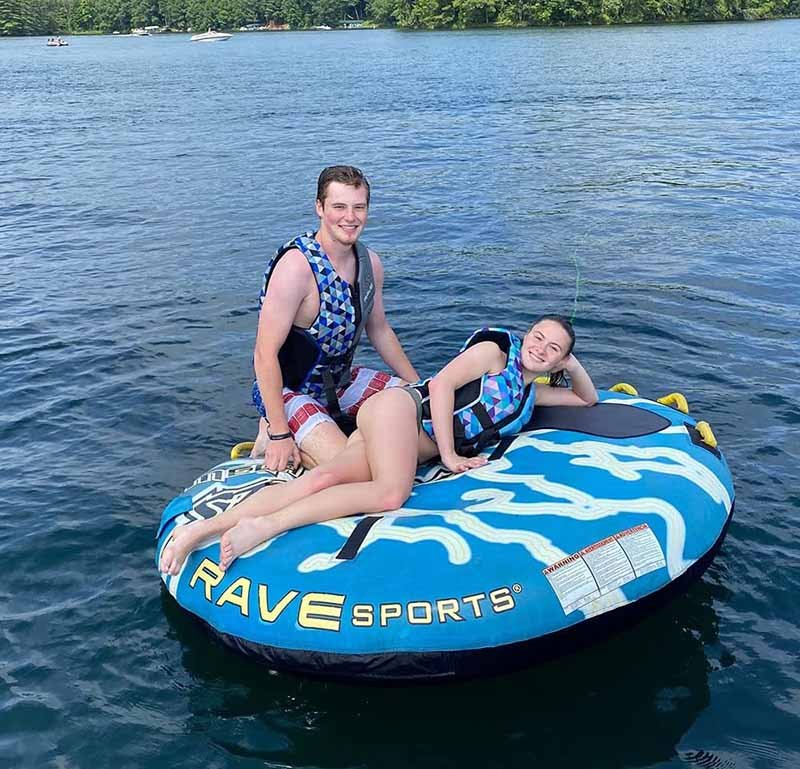
Szoneier offers private-label neoprene life jackets with custom logos, colors, panel layouts, pockets, and adjustable straps. Low MOQs (50 pcs) enable sampling and design iterations. Lead times range 15–25 days post-approval. Options include reflective trims, harness points, and custom buoyancy ratings. In-house R&D and free design services ensure tailored solutions for marine operators, rescue services, and promotional programs.
Branding & Aesthetics
- Logo Application: Silicone heat-transfer for vivid colors or embroidery for a premium feel.
- Color Matching: Unlimited Pantone options across panels and webbing.
- Reflective Elements: 3M™ Scotchlite™ tape integrated into design.
Structural Customization
- Panel Layouts: Front-zip, asymmetrical closures, or side-entry designs.
- Pockets & Loops: Tool loops, radio pockets, and D-rings.
- Buoyancy Ratings: Specify foam density to meet desired Newton or pound ratings.
Sampling Process
- 3D CAD Mockups: Virtual renderings for initial approval
- Physical Prototypes: Delivered in 7–10 days for fit and function testing
- Feedback Cycles: Two rounds of design tweaks included
Production & QC
- In-House R&D: Continuous material optimization
- 100% Inspection: Seams, hardware, and foam integrity checked
- Batch Testing: Retention samples for traceability
Packaging & Logistics
- Custom Packaging: Branded boxes or polybags with instructions
- Shipping: FOB Shenzhen or CFR door-to-door
- After-Sales: Spare parts and repair kits available
| Feature | Standard PFD | Custom Neoprene PFD |
|---|---|---|
| MOQ | 500 pcs | 50 pcs |
| Lead Time | 25–35 days | 15–25 days |
| Logo Methods | Screen print | Heat-transfer, Embroidery |
| Color Options | 5 standard | Unlimited Pantone |
| Certification Support | Basic docs | Full lab reports |
| Reflective Tape | Optional | Integrated design |
Leveraging Szoneier’s OEM/ODM capabilities lets you launch branded neoprene life jackets that excel in safety, style, and performance—without high minima or long waits.
What Are the Key Performance Benefits of Neoprene in Marine Safety Gear?
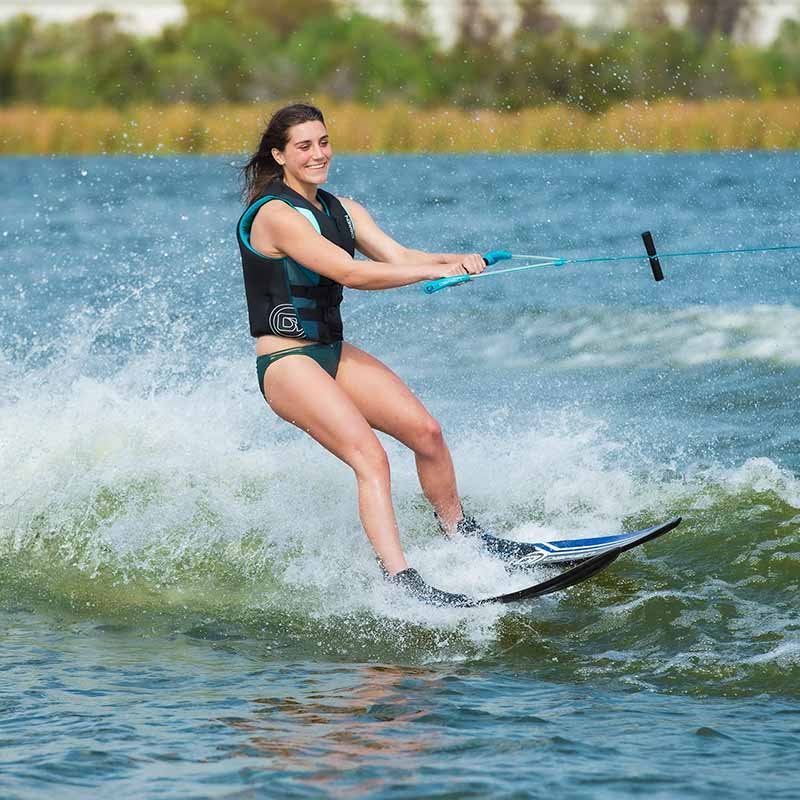
Neoprene life jackets deliver unmatched thermal insulation, UV and chemical resistance, and stretch recovery compared to nylon/foam alternatives. Their close fit reduces water ingress and wind chill, while high-compression-set resistance preserves buoyancy over repeated cycles. Additionally, neoprene excels in abrasion resistance—critical for harsh offshore and diving applications. Together, these benefits translate into longer service life, enhanced user comfort, and lower replacement costs for commercial operators.
Thermal Insulation & Comfort
Neoprene’s closed-cell structure traps a thin film of water warmed by body heat—studies show up to a 30% reduction in core heat loss versus foam vests. For operators in 15–18 °C waters, this means extended activity times and fewer cold-related incidents.
UV & Chemical Resistance
Limestone-based neoprene retains >80% tensile strength after 2,000 h UV exposure (ASTM D4329), outperforming many alternatives. It also resists oils and fuels—essential for rescues around rigs or spill zones.
Stretch Recovery & Fit
Compression-set tests (ASTM D395) demonstrate neoprene’s ability to rebound >95% thickness after 1,000 cycles at 50% strain—a critical factor for rental fleets with varied body types. A snug fit prevents “ride-up” during immersion.
Abrasion & Tear Resistance
Surface tests (ASTM D772) show neoprene withstands >1,000 rub cycles against rough surfaces before failure, outlasting nylon-shell jackets by 2–3×. This durability reduces gear turnover on commercial vessels.
Buoyancy Retention Over Time
Encapsulated closed-cell foam maintains >90% buoyancy after five years of saltwater exposure and repeated compression—whereas foam-only PFDs often lose 10–15% buoyancy within two years.
How Do You Maintain and Care for Neoprene Life Jackets to Extend Their Service Life?
Rinse neoprene PFDs with fresh water after each use; use mild, non-detergent soap for deep cleaning. Hang to air-dry away from direct sunlight. Store flat or hanging—avoid folding. Inspect seams, foam panels, and hardware quarterly. Minor tears can be repaired with neoprene cement; worn straps or buckles should be replaced immediately. Proper care preserves buoyancy, prevents mold growth, and extends service life by up to two years.
Post-Use Rinse & Cleaning
Flush jackets with lukewarm freshwater. For grime, use a neoprene-safe cleaner (e.g., McNett Revivex® Sport). Avoid detergents with fabric softeners.
Drying Best Practices
Hang on wide, padded hangers in shaded, well-ventilated areas. Flip jackets halfway to dry interiors fully, preventing mold.
Storage & Long-Term Care
Store flat or hanging—never folded tightly. Use breathable storage bags to keep dust out while allowing airflow.
Inspection & Repairs
Quarterly check for seam delamination, foam compression (>10% loss), and hardware wear. Repair small tears with neoprene cement; replace brittle buckles.
Recertification & Compliance
Maintain service logs and engage certified centers annually for pressure testing and recertification under ISO or USCG guidelines.
Are Neoprene Life Jackets Cost-Effective for Bulk Orders and Wholesale Distribution?
Although unit prices for neoprene life jackets are 20–40% higher than basic foam vests, bulk discounts (5–15% at 200+ pcs) and extended service life reduce replacement frequency. Lower injury claims, improved user compliance, and premium branding can justify the upfront investment. When total cost of ownership—including maintenance, downtime, and liability—is considered, neoprene PFDs often emerge as the more economical choice for marine fleets and rental operators.
Unit Price Comparison
| Product Type | MOQ | Price/Piece (USD) | Bulk Discount |
|---|---|---|---|
| Standard Foam PFD | 500 pcs | $18–22 | 5% at 1,000+ pcs |
| Basic Neoprene PFD | 200 pcs | $25–30 | 8% at 500+ pcs |
| Premium Custom Neoprene | 50 pcs | $32–38 | 10–15% at 200+ pcs |
Replacement & Maintenance Costs
- Foam PFDs: ~3 years service life; $7–8/year per unit
- Neoprene PFDs: ~5 years service life; $6–7/year per unit
Liability & Compliance Savings
Neoprene PFD compliance can reach 95% versus 75% for foam vests—higher compliance reduces accident risk and insurance premiums by up to 12%.
Brand Value & Upsell
Rental businesses report 20–30% higher fees for neoprene jackets, boosting revenue.
Inventory & Logistics
Low MOQs enable just-in-time orders, reducing warehouse costs. Consolidated shipments of 500+ units yield freight savings of 8–12%.
Five-Year TCO Model
Over five years for 200 units:
- Initial Cost: $6,000 (neoprene) vs. $4,000 (foam)
- Replacements: 0 (neoprene) vs. +$4,000 at Year 3 for foam
- Maintenance: $1,000 (neoprene) vs. $1,800 (foam)
- Liability Savings: –$2,400 (neoprene) vs. –$1,800 (foam) 5-Year TCO: $4,600 (neoprene) vs. $7,000 (foam)
Conclusion
Choosing neoprene life jackets means investing in safety, comfort, and long-term value. With 18 years of neoprene R&D and manufacturing expertise, Szoneier delivers fully customizable solutions—low MOQs, free designs, rapid sampling, and robust certification support.
Ready to upgrade your fleet’s safety gear? Contact Szoneier at manager@neoprene-bag.com or (+86) 13423847456 for a personalized quote and design consultation. Let us help you enhance protection, performance, and brand impact—one life jacket at a time.

